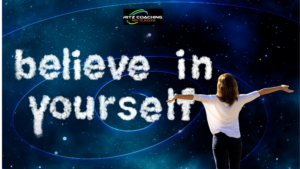
Our thoughts drive our future and it is a very powerful tool because our thoughts control our emotions, and emotions lead to behaviors, and it shapes our actions as well as reactions.
The number one support tool which guides you throughout life and assists in the pathway to reaching your goal and dream is the things you say to yourself. Things that you say to yourself. When we don’t believe we can, we won’t. The way we think and react to any situations decide our future endeavor.
In this article, you will learn what limiting beliefs are? How to identify and combat it? Without further delay let’s start with “What limiting beliefs are?
What is Limiting Belief?
Limiting beliefs are those things you believe about yourself that ultimately place limitations on your action subsequently in your abilities. They are subconscious thoughts creeping in and telling you something that is ultimately not true. Limiting beliefs are those which create constrain in our way. Just by believing them, we do not think, do or say the things that they inhibit. And in doing so we impoverish our lives. We may have multiple belief based on our day to day learning and experiences from life, the beliefs may be about rights, duties, abilities, permissions, and so on. Limiting beliefs are often related to self. It includes ourselves and our self-identity primarily. In a larger view, the beliefs may also be about other people and the world in general.
The most common belief among human being are as follows:
- Fear of success
- Fear of failure
- Fear of comparison
- Fear of incompatibility
- Fear of rejection.
- Fear of worthiness” We don’t deserve/we are not worthy of success
- Others hold me back.
Why it happens when it happens?
We begin to start thinking and forming our beliefs about the surroundings and the world from a very early age in childhood. Our brains are the most powerful data center and are very good at spotting patterns and making relevant connections with the activities, so we constantly process the massive stream of information around us and use it to form beliefs. Generally, the purpose of belief formation is to help us understand the surrounding, world and keep inventing new ways and tools to survive in this world.
For example, in early childhood, beliefs are usually created by our own experiences and nursed by our parents or other powerful and active figures in our lives. For Example, If I hit someone, I get punished, so hitting people must be bad. If I would say “please” and “thank you” In response to someone, I get rewarded. So, my brain will process in a way that being polite and showing good gestures must be good.
As we get older, we start to form more complex beliefs and are able to draw on a much wider range of sources such as books, newspapers, movies, TV advertisements, the behavior of our peers, etc. Nevertheless, the core beliefs that we formed as young children can be very impactful, and even when we encounter new information or explanations, we often cling to our old beliefs and experience and always try to devise our way forward in similar directions.
One of the reasons for the same is that we don’t like being wrong. Once we’ve developed and formed a belief, we tend to look for more evidence to support that belief and to discount contradictory evidence. This gives us a stable foundation for understanding a world that would otherwise be very confusing, but it also means that beliefs can be tough to get rid of, even when they’re holding us back.
How to Identify Your Limiting Beliefs?
Blame-Free Analysis
Many of us set goals or resolutions every year often around New Year, and many of us fall short—often around Feb/March. We do the root cause analysis and in most of the cases, we beat ourselves up over our lack of focus and willingness and plan to start the cycle all over again next year. If it seems like your experience, please ask some serious and honest questions yourself.
Were your goals realistic?
If Yes, why didn’t you able to meet your goal? Focusing on your own behavior and actions, what could you have done differently? Why didn’t you do that at the time?
Are you afraid of the outcome? What patterns can you observe? At times when you’ve felt riveted and cannot find the right way to forward, what is the one thought that prevents you from taking action? What stories do you tell yourself? What makes you keep going?
Time Travel
As we grow older, we will be realized that many of our existing belief has been developed in the early stage of life, please go back in the time and make a note on your early experience and belief formation.
Put It Together
Please review the whole details and once you have finished the same, please review the pattern and analyze cause and effects. You can always compare the current situations to the past ones.
How to Overcome Your Limiting Beliefs?
Understand Their Purpose.
The moot pointers are that all beliefs have a purpose connected to it, and usually, that purpose is somehow connected to keeping you in the shield or guarding you against pain or another negative outcome.
Question Them.
Once you have recognized the purpose of your belief and where the belief came from, start raising a question about where the details came from.
Go through this process with each of the limiting beliefs you have selected or identified. Even if you think you know the answers already, you might come up with something new during the discovery of the process and the very process of overtly questioning. You will be surprised to see that your limiting beliefs can be a great help in reducing their power.
- Laugh at Them
Humour can be a very effective unblocking tool. It’s hard for something to have power over you when you’re laughing at it.
- Formulate New Beliefs
To restrict the power of your old beliefs, you also need to alter them with new beliefs. You have to believe in something to make sense in the surroundings and in the current situations and to give yourself a stable foundation for navigating through it.
- Retrain Your Brain
Although the brain tends to hold onto beliefs, it can also be retrained. Beliefs are basically patterns that the brain has identified, so by feeding it new patterns, you can start to rewire it.
- Get Inspiration
To sustain you in what will be a long and sometimes difficult process, look for examples to follow. Find people in business or other areas of life who embody the beliefs you’re trying to adopt for yourself.

You made some nice points there. I looked on the internet for the subject matter and found most individuals will agree with your site.
Thank you so much
Hello! I could have sworn I’ve been to this blog before but after browsing through some of the post I realized it’s new to me. Anyways, I’m definitely happy I found it and I’ll be book-marking and checking back frequently!
Thank you
You made some nice points there. I looked on the internet for the subject matter and found most individuals will agree with your site.
Thank you
You made some nice points there. I looked on the internet for the subject matter and found most individuals will agree with your site.
You made some nice points there. I looked on the internet for the subject matter and found most individuals will agree with your site.
You made some nice points there. I looked on the internet for the subject matter and found most individuals will agree with your site.
You made some nice points there. I looked on the internet for the subject matter and found most individuals will agree with your site.
You made some nice points there. I looked on the internet for the subject matter and found most individuals will agree with your site.
Major thanks for the article post.Much thanks again. Keep writing. Larissa Benya
Thank you
“Wow, great article.Much thanks again. Want more.” Damon Aragao
Looking forward to reading more. Great article.Really looking forward to read more. Keep writing. Shenna Kotson
Wow, great blog article.Really thank you! Really Great.
Hello, I enjoy reading through your post. I wanted to write a little comment to support you.
What’s Taking place i’m new to this, I stumbled upon this
I’ve found It positively useful and it has helped me out
loads. I’m hoping to give a contribution & aid different users like its aided me.
Great job.
Every weekend i used to pay a quick visit this web page, because i want enjoyment, since this this web page conations really pleasant funny material too.